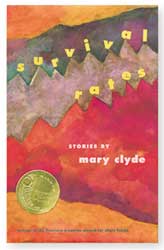Dr. Cracroft prescribes several “gotta-read” books for your enjoyment.
This, my dears, is my next-to-last Book Nook column and the last column (after 20 years) in which I’ll be chatting with you about books written by BYU faculty, staff, alumni, and members of BYU’s Board of Trustees. (Please save your sobs and gasps until after my farewell retrospective column in the summer issue—then let the tears flow.) I am constrained by limited space and word-pinching editors to just a few recent favorites among the many deserving books piled atop my desk. I invite you to go online to magazine.byu.edu/booknook to find notices of more than a dozen works of fiction and nonfiction.
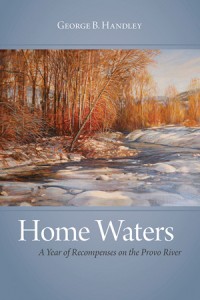 In Home Waters: A Year of Recompenses on the Provo River (University of Utah Press; 236 pp.; $24.95), BYU professor of humanities and comparative literature George B. Handley offers an invigorating draft of mountain waters for nature and gospel lovers. His book-length essay is a sort of Latter-day Saint take on Henry David Thoreau’s Walden or Norman Maclean’s evocation of fly-fishing as holiness in A River Runs Through It. Handley, a literary scholar, lover of the natural world, and avid fly-fisherman, dips his net deeply into the Provo River watershed and pulls a plentiful catch of spiritual insights from the well-springs of Mormon theology, history, and culture as he applies his “literary imagination” to seeking “the uniqueness of a Mormon relationship to land”—and water (p. xv). Tracking the Provo River from its Uinta headwaters through Provo to Utah Lake, Handley follows Walden’s seasonal organization as he seeks links between the ugly, cement-and-wire attack on nature and the natural and spiritual renewal afforded by the primeval wilderness. “[T]hinking like a river” (p. xv), he methodically explores the watershed, keeping a journal of his discoveries while running, hiking, snowshoeing, kayaking, and, always, fly-fishing, along the Provo’s banks. Looking through lenses tinted with the plan of salvation, he peers at his experiences in the watershed—with one eye peeled for immutability symbolized in streams, rivers, rocks, and mountains and the other looking out for the man-made cacophony of mutability. He comes closest to finding inner peace and harmony in the art of fly-fishing. He intersperses in his essay accounts from recent and ancient geological and natural history, along with Indian, folk, and local lore. To that, he adds his family and personal history, including his own struggle to understand his older brother’s suicide at age 22 (George was 18). Underlying his search for recompense for losses is classic Mormonism’s “unusual articulation of the intimate and proximate relationship between spirit and body, heaven and earth” (p. xvi); he is saddened by the contrast between the visionary spiritual, ecological, and stewardship teachings of Joseph Smith and Brigham Young and the exploitation of the land and its natural resources by its present occupants. He hopes it is not too late to cultivate a “collective environmental ethos and a sense of place that are animated by a variety of ethnic and religious experiences” (p. xiv). Still, Handley learns that “no rest for the soul can be found in impatiently escaping—even temporarily—the human community” for nature (p. 210). Nature proffers no “prodigal returns or exotic escapes; it offer[s] instead atoning healing” as recompense for preserving her. “[T]he watershed is my palliative for the numbing effects of predictability,” he writes. “It startles me into wakefulness, disturbs the easy illusions of selfhood, and challenges the imagination to be something more than idle fantasy, something truer than a worship of a god after my own image” (p. 211). You’ll enjoy this masterful book, which is destined to become a classic in Latter-day Saint studies.
In Home Waters: A Year of Recompenses on the Provo River (University of Utah Press; 236 pp.; $24.95), BYU professor of humanities and comparative literature George B. Handley offers an invigorating draft of mountain waters for nature and gospel lovers. His book-length essay is a sort of Latter-day Saint take on Henry David Thoreau’s Walden or Norman Maclean’s evocation of fly-fishing as holiness in A River Runs Through It. Handley, a literary scholar, lover of the natural world, and avid fly-fisherman, dips his net deeply into the Provo River watershed and pulls a plentiful catch of spiritual insights from the well-springs of Mormon theology, history, and culture as he applies his “literary imagination” to seeking “the uniqueness of a Mormon relationship to land”—and water (p. xv). Tracking the Provo River from its Uinta headwaters through Provo to Utah Lake, Handley follows Walden’s seasonal organization as he seeks links between the ugly, cement-and-wire attack on nature and the natural and spiritual renewal afforded by the primeval wilderness. “[T]hinking like a river” (p. xv), he methodically explores the watershed, keeping a journal of his discoveries while running, hiking, snowshoeing, kayaking, and, always, fly-fishing, along the Provo’s banks. Looking through lenses tinted with the plan of salvation, he peers at his experiences in the watershed—with one eye peeled for immutability symbolized in streams, rivers, rocks, and mountains and the other looking out for the man-made cacophony of mutability. He comes closest to finding inner peace and harmony in the art of fly-fishing. He intersperses in his essay accounts from recent and ancient geological and natural history, along with Indian, folk, and local lore. To that, he adds his family and personal history, including his own struggle to understand his older brother’s suicide at age 22 (George was 18). Underlying his search for recompense for losses is classic Mormonism’s “unusual articulation of the intimate and proximate relationship between spirit and body, heaven and earth” (p. xvi); he is saddened by the contrast between the visionary spiritual, ecological, and stewardship teachings of Joseph Smith and Brigham Young and the exploitation of the land and its natural resources by its present occupants. He hopes it is not too late to cultivate a “collective environmental ethos and a sense of place that are animated by a variety of ethnic and religious experiences” (p. xiv). Still, Handley learns that “no rest for the soul can be found in impatiently escaping—even temporarily—the human community” for nature (p. 210). Nature proffers no “prodigal returns or exotic escapes; it offer[s] instead atoning healing” as recompense for preserving her. “[T]he watershed is my palliative for the numbing effects of predictability,” he writes. “It startles me into wakefulness, disturbs the easy illusions of selfhood, and challenges the imagination to be something more than idle fantasy, something truer than a worship of a god after my own image” (p. 211). You’ll enjoy this masterful book, which is destined to become a classic in Latter-day Saint studies.
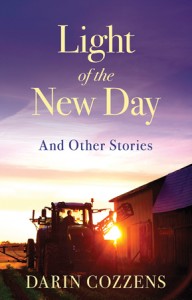 Darin L. Cozzens’ (BA ’84) Light of the New Day and Other Stories (Zarahemla Books; 209 pp.; $15.95) contains 12 well-crafted stories, linked by characters who are sometimes related by blood; by their shared rural and western identities; by their hardscrabble farm life with its endless rounds of raising, feeding, tending, and nursing livestock; and by their dogged commitment to Mormonism and missions, temple marriage, and church activity. Most important, Cozzens’ well-developed characters are compellingly real—full of strengths and foibles. They are quietly engaged in a kind of literary-deterministic, existential struggle, troubled by inner conflicts and unrealized hopes and compelled to face up to the end of dreams of a gentler, more comfortable life. Cozzens, who grew up in Ralston, Wyo. (pop. 233), writes with authority about these matters and seems torn by the attraction of the land and of Sisyphean tasks—carrying water, digging post holes, stretching barbed wire, and feeding animals. These stories play out in or near the fictitious village of Balford in the farming country of northwestern Wyoming. The felt presence of the Wyoming landscape is ubiquitous—full of parched land, backbreaking toil, the smell of branding-seared cattle flesh, and the stench of newborn calves being bottle-fed in the just-cleaned kitchen of the bone-weary housewife. One delights in the distinctive points of view of the narrators and in the ambivalence of characters who must watch their children finally elect to flee this grand but terrible and lonesome land for missions, jobs, mates, and other lives and dreams. Cozzens is a distinguished professional in his craft; he is one of the best Latter-day Saint fiction writers we have, and these stories will prove that claim.
Darin L. Cozzens’ (BA ’84) Light of the New Day and Other Stories (Zarahemla Books; 209 pp.; $15.95) contains 12 well-crafted stories, linked by characters who are sometimes related by blood; by their shared rural and western identities; by their hardscrabble farm life with its endless rounds of raising, feeding, tending, and nursing livestock; and by their dogged commitment to Mormonism and missions, temple marriage, and church activity. Most important, Cozzens’ well-developed characters are compellingly real—full of strengths and foibles. They are quietly engaged in a kind of literary-deterministic, existential struggle, troubled by inner conflicts and unrealized hopes and compelled to face up to the end of dreams of a gentler, more comfortable life. Cozzens, who grew up in Ralston, Wyo. (pop. 233), writes with authority about these matters and seems torn by the attraction of the land and of Sisyphean tasks—carrying water, digging post holes, stretching barbed wire, and feeding animals. These stories play out in or near the fictitious village of Balford in the farming country of northwestern Wyoming. The felt presence of the Wyoming landscape is ubiquitous—full of parched land, backbreaking toil, the smell of branding-seared cattle flesh, and the stench of newborn calves being bottle-fed in the just-cleaned kitchen of the bone-weary housewife. One delights in the distinctive points of view of the narrators and in the ambivalence of characters who must watch their children finally elect to flee this grand but terrible and lonesome land for missions, jobs, mates, and other lives and dreams. Cozzens is a distinguished professional in his craft; he is one of the best Latter-day Saint fiction writers we have, and these stories will prove that claim.
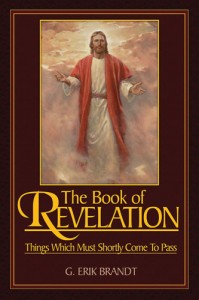 G. Erik Brandt’s (BS ’91) comprehensive commentary, The Book of Revelation: Things Which Must Shortly Come to Pass (Granite Publishing; 588 pp.; $29.95) presents (in ways I have not seen before) the detailed historical background of the Book of Revelation and clarifies John’s purposes in writing to the seven ancient branches of the Church. Integrating additional insights by modern-day prophets, seers, and revelators, Brandt gives impressive and insightful commentary on John’s prophecies and warnings to those branches and to our own day. Brandt’s commentary is a well-written, very useful scholarly explication of John the Revelator’s marvelous visions and prophetic insights into “things which must shortly come to pass” (Rev. 1:1).
G. Erik Brandt’s (BS ’91) comprehensive commentary, The Book of Revelation: Things Which Must Shortly Come to Pass (Granite Publishing; 588 pp.; $29.95) presents (in ways I have not seen before) the detailed historical background of the Book of Revelation and clarifies John’s purposes in writing to the seven ancient branches of the Church. Integrating additional insights by modern-day prophets, seers, and revelators, Brandt gives impressive and insightful commentary on John’s prophecies and warnings to those branches and to our own day. Brandt’s commentary is a well-written, very useful scholarly explication of John the Revelator’s marvelous visions and prophetic insights into “things which must shortly come to pass” (Rev. 1:1).
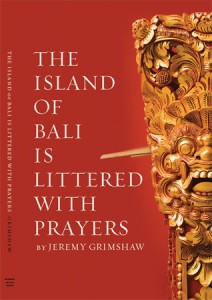 The Island of Bali Is Littered with Prayers (Mormon Artists Group; 153 pp.; $14.95) is a fascinating little book that tells the story of how Jeremy Grimshaw, assistant professor of music at BYU and student of Balinese gamelan music, purchased instruments, imported able Balinese musicians, and organized a percussion music group, Bintang Wahyu, which, spoken, sounds like BYU. He found that to understand the music, he must become immersed in Indonesian culture, society, and people, all of which he came to admire and cherish.
The Island of Bali Is Littered with Prayers (Mormon Artists Group; 153 pp.; $14.95) is a fascinating little book that tells the story of how Jeremy Grimshaw, assistant professor of music at BYU and student of Balinese gamelan music, purchased instruments, imported able Balinese musicians, and organized a percussion music group, Bintang Wahyu, which, spoken, sounds like BYU. He found that to understand the music, he must become immersed in Indonesian culture, society, and people, all of which he came to admire and cherish.
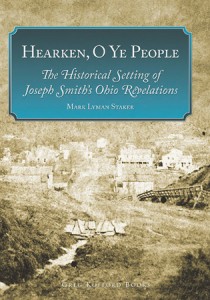 Mark Lyman Staker’s (BA ’87) Hearken, O Ye People: The Historical Setting of Joseph Smith’s Ohio Revelations (Greg Kofford Books; 693 pp.; $34.95) is a landmark history of the Church in Ohio, 1830–38. Staker, senior researcher in the Church History Department, has written an illuminating study of the historical contexts of 71 sections of the Doctrine and Covenants revealed to the Prophet Joseph Smith in Ohio. Staker probes the circumstances behind these revelations, which are directives to the fledgling Church, and details events only partially understood by most readers, limited as they are to scant information and cryptic headnotes about the Ohio sections of the D&C.Hearken, O Ye People does not purport to be a comprehensive history of the Kirtland period in Latter-day Saint history, but it may be as close as we come to such a history. Staker draws upon an array of sources, many not previously tapped, to discuss the contexts of the Prophet Joseph’s Ohio revelations in four sections. The beginnings of the Church in Ohio read like a classic missionary story: In November 1830, the “new revelation” was brought to Ohio by a quartet of missionaries, Oliver Cowdery, Peter Whitmer, Parley Pratt, and Ziba Peterson—who walked into Ohio country after a disappointing visit in New York state among several bands of Indians. Their labors among white settlers in Ohio, however, produced immediate and startling success, including Sidney Rigdon and his “Rigdonite” followers. The group of newly minted Saints (soon dubbed “Mormonites” or “Mormons” by local journalists) remained disorganized and leaderless until Joseph Smith could move to Kirtland in January 1831 and assume leadership of his flock. Joseph later recollected, “The members were striving to do the will of God, so far as they knew it, though some strange notions and false spirits had crept in among them” (headnote, section 41). In these circumstances, the Prophet turned to the Lord for guidance and received the 71 revelations, which dealt with organizational, doctrinal, and procedural matters in the Church. Staker’s long selective chronology makes clear the serious gaps in Latter-day Saint history in Ohio. Church histories of this eventful near-decade have neglected the period most likely because of the paucity of church records at the time and because of the schism that developed among the Saints following the failure of the Kirtland Safety Society. It was a dark period, which led to Joseph Smith and Sidney Rigdon’s hasty flight from Kirtland to Missouri in January 1838. They were followed that summer by the main body of Kirtland Saints but left in Kirtland a large body of dissenters. Historian Richard Lyman Bushman writes of this gem of well-researched and well-written history, “I am not aware of a more deeply researched and richly contextualized study of any period of Mormon Church history than Mark Staker’s study of Mormons in Ohio. This book sets a new standard of in-depth research in Latter-day Saint history” (bookflap).
Mark Lyman Staker’s (BA ’87) Hearken, O Ye People: The Historical Setting of Joseph Smith’s Ohio Revelations (Greg Kofford Books; 693 pp.; $34.95) is a landmark history of the Church in Ohio, 1830–38. Staker, senior researcher in the Church History Department, has written an illuminating study of the historical contexts of 71 sections of the Doctrine and Covenants revealed to the Prophet Joseph Smith in Ohio. Staker probes the circumstances behind these revelations, which are directives to the fledgling Church, and details events only partially understood by most readers, limited as they are to scant information and cryptic headnotes about the Ohio sections of the D&C.Hearken, O Ye People does not purport to be a comprehensive history of the Kirtland period in Latter-day Saint history, but it may be as close as we come to such a history. Staker draws upon an array of sources, many not previously tapped, to discuss the contexts of the Prophet Joseph’s Ohio revelations in four sections. The beginnings of the Church in Ohio read like a classic missionary story: In November 1830, the “new revelation” was brought to Ohio by a quartet of missionaries, Oliver Cowdery, Peter Whitmer, Parley Pratt, and Ziba Peterson—who walked into Ohio country after a disappointing visit in New York state among several bands of Indians. Their labors among white settlers in Ohio, however, produced immediate and startling success, including Sidney Rigdon and his “Rigdonite” followers. The group of newly minted Saints (soon dubbed “Mormonites” or “Mormons” by local journalists) remained disorganized and leaderless until Joseph Smith could move to Kirtland in January 1831 and assume leadership of his flock. Joseph later recollected, “The members were striving to do the will of God, so far as they knew it, though some strange notions and false spirits had crept in among them” (headnote, section 41). In these circumstances, the Prophet turned to the Lord for guidance and received the 71 revelations, which dealt with organizational, doctrinal, and procedural matters in the Church. Staker’s long selective chronology makes clear the serious gaps in Latter-day Saint history in Ohio. Church histories of this eventful near-decade have neglected the period most likely because of the paucity of church records at the time and because of the schism that developed among the Saints following the failure of the Kirtland Safety Society. It was a dark period, which led to Joseph Smith and Sidney Rigdon’s hasty flight from Kirtland to Missouri in January 1838. They were followed that summer by the main body of Kirtland Saints but left in Kirtland a large body of dissenters. Historian Richard Lyman Bushman writes of this gem of well-researched and well-written history, “I am not aware of a more deeply researched and richly contextualized study of any period of Mormon Church history than Mark Staker’s study of Mormons in Ohio. This book sets a new standard of in-depth research in Latter-day Saint history” (bookflap).
Richard H. Cracroft is BYU’s Nan Osmond Grass Professor in English, emeritus. He has written this column since 1991.
AN ONLINE EXTENSION OF BOOK NOOK
By Richard H. Cracroft
Selected Nonfiction
Mormons as Citizens of a Communist State: A Documentary History of the Church of Jesus Christ of Latter-day Saints in East Germany, 1945-1990; foreword by Ronald M. Smelser (University of Utah Press; 450 pp.; $39.95) by Raymond M. Kuehne, is an up-close documentary of behind-the-Iron-Curtain negotiations among Elder/President Thomas S. Monson, Elder Russell M. Nelson, Elder Hans B. Ringger and German LDS leaders, with the Communist DDR (German Democratic Republic) leaders. The talks, over many years, led to the organization of stakes in Eastern Europe, the erection of the Freiberg Temple, and the establishment of missions in the DDR, Poland, Czechoslovakia (Czech) Republic, and Hungary. This volume, first published in Germany in 2007, is a unique history of LDS Church leaders engaging in inspired and persistent diplomacy.
In 400 Questions & Answers About The Life and Times of Jesus Christ (Covenant Communications; 254 pp.; $17.99), Susan Easton Black, prolific scholar of LDS Church History and Doctrine, teacher, and popular speaker, undertakes to strengthen faith in the Savior by answering particular questions about the historic and cultural background of Jesus of Nazareth, as focused and enhanced by the added light of modern revelation. The 400 questions and answers are grouped in 9 color-coded sections that follow the Lord’s life through the stages of His ministry, asking (and answering) questions you probably never ventured to ask in Sunday School.
Escape from Rwanda (Deseret Book; 144 pp.; $18.99) tells the story of author John Y. Bizimana (BS ’10), a recent BYU graduate who lived in Kigali until the Rwandan genocide in 1994. Fleeing Rwanda, he and his family sought refuge, first in Zimbabwe then Belgium. Unimaginable hardships awaited this determined family in their travels, as did inspiring acts of kindness, compassion, charity—and plenty of miracles.
Stand for the Family: Alarming Evidence and Firsthand Accounts From The Front Lines of The Battle (Inglestone Publishing; 257 pp.; $17.95) by Sharon Ruff Slater (BA ’85), president of Family Watch International, provides well-argued talking points and well-researched data exposing covert threats to the family and countering anti-family movements around the world, lending support to stalwarts of any faith in defending marriage and the family.
In Life Lessons From Fathers of Faith: Inspiring True Stories About Latter-day Dads (Covenant Communications; 320 pp; $29.99), compiled by Gary W. Toyn and Michael K. Wilder, over 100 sons and daughters praise fatherhood and lovingly recount their relationships with their fathers. This large and heavy volume is worth its weight in well-told, inspiring stories by the children of LDS presidents, members of the Quorum of Twelve Apostles, Church leaders, and fathers accomplished in the fields of entertainment, government, politics, business, education, sports, and media/broadcasting.
In To Be Virtuous, foreword by Dr. Richard G. Wilkins (BA ’76) (Digital Legend; 309 pp.; $29.95), M. Gregg Fager (MEd ’78) undertakes to identify and define the human virtues, which are the “true foundation of all worthy thoughts, words and actions and [are] the basis of human character” (p. xxi). He asserts that the refinement of such virtues is the mortal’s way to comprehending the Divine. Fager includes The Human Virtues Dictionary: The Character Fruits of All Virtues Thoughts, Beliefs and Values, with more than 4800 definitions of being virtuous.
The Latter-day Saint Family Encyclopedia (Thunder Bay Books; 400 pp.; $34.95), by Christopher K. Bigelow (MA ’98) and Jonathan Langford, edited by Donald L. Brugger (MA ’93), is a large (9 by 12 inch), beautifully illustrated encyclopedia and A-Z guide to LDS doctrines, teachings, history, founders and leaders. This is a valuable and family-friendly reference tool.
Selected Current Fiction
Two BYU alumni who are world-class writers of fantasy and science fiction have done it again:
Orson Scott Card (BA ’75), in Pathfinder (Simon Pulse/Simon & Schuster; 662 pp.;$18.99), employs his on-the-edge-of-your chair narratives and astonishing imaginative leaps across historical, cultural, and linguistic barriers, and flashes across time and universes at mega-lightspeeds to offer yet another volume of glorious Cardiana.
And if Card is king, Brandon W. Sanderson (BA ’00) is crown prince, as he demonstrates in The Way of Kings (Tor; 1008 pp.; $14.23), volume one in The Stormlight Archive series, the third of his best-selling series, along with the Alcatraz and Mistborn series. He is also in process of completing the late Robert Jordan’s The Wheel of Time series. All of these works (which he publishes online for a voracious readership) evince Sanderson’s teeming imagination, out-of-this-world imagery, and well-crafted characters who operate within unique magic systems and undergo growth and change through staggeringly long narratives (1000 + pages). You’ll be transported to strange and unique worlds without number.
Already well established in the LDS young adult market, Allyson Braithwaite Condie (BA ’01) goes national in Matched (Dutton Juvenile; 384 pp.; $17.99), the first in a projected dystopian trilogy (that is, a story about government gone awry, as in 1984 or Brave New World). “The Society” assigns matches for Cassia Reyes—and all youths—but glitches in the process lead to unexpected consequences. This award-winning (Publishers’ Weekly Best Children’s Books of 2010), well-written novel is a great read for young adults of any vintage. Prediction: we’ll all be reading more novels by Ally Condie, of Orem, Utah.
The Silence of God: A Historical Novel (Deseret Book; 376 pp.; $24.99), by Gale Kamp Sears (BA ’78), tells the riveting story (based in fact) of Johan and Alma Lindlof and their 8 children—the only LDS family in St. Petersburg, Russia, as the country is torn asunder by the Bolshevik Revolution of 1917. Divided by the confusion of revolt, the Lindlofs are tried by an atheistic ideology that demands “the silence of God.” A family friend, Natasha Ivanovna Gavrilova, a supporter of godless Bolshevik ideology, is shocked by the impact of atheistic revolution on her family and friends and has to re-examine her heart and decide what and whom to believe.
In The Road Show, A Novel (Bonneville Books; 120 pp; $10.99), by Braden Bell (BA ’97), Scott Jenson, an MFA drama student, is called to direct his ward road show. Reluctantly, he assembles a cast of ward members who, like Scott, are struggling with doubt, loneliness, depression, chronic illness, and cynicism until this road show reenactment of scenes from the Savior’s life teaches the power of the Atonement and brings about wonderful transformations in these human lives.
In Reluctant Soldier, Reluctant Saint (Bonneville Books; 218 pp.; $14.99), Thomas B. Roulstone’s (BA ’73) fifth LDS historical novel, Irish immigrant James McCorkle reluctantly enlists in the U.S. Army just in time to accompany the historic 1857–8 Expedition to Utah Territory to put down the alleged Mormon “rebellion.” But en route James encounters life-changing Mormonism. The rest is, in fact and fiction, history.
Uncut Diamonds, A Novel (WiDō Publishing; 375 pp.; $15.95) was written by Karen Jones Gowen (BGS ’06). Tangled in the recession of the late 1970s, Marcie and Shawn McGill, a young LDS couple living in small-town Illinois, struggle amidst daunting challenges to save their home, family, and marriage. They gain confidence, encouragement, and perspective by reading journals and diaries about how their ancestors met and dealt with personal challenges.
In Shadows of Eden (Bonneville; 247 pp.; $16.99), by Timothy F. Bone (BA ’85), Del Price, is a skilled private detective, and a faithful, witty, and articulate commentator on the perils of the modern world, who undertakes a suspenseful journey into the dangerous “shadows of Eden.”







